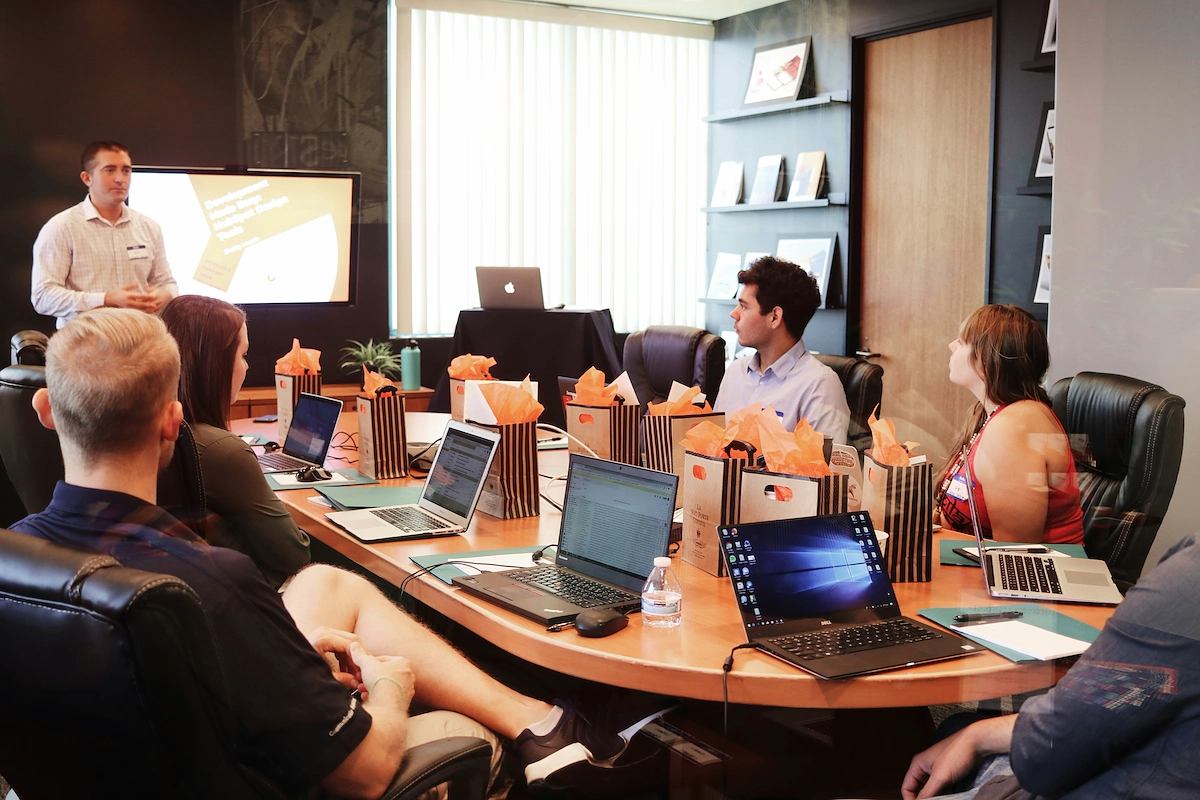Starting a popcorn business is an exciting venture that combines culinary creativity with business savvy. The market is worth billions of dollars, and there's steady demand for popcorn at events, in gift baskets, and for at-home snacking.
This guide will take you through the practical steps of validating your business concept, obtaining necessary licenses, acquiring equipment, and building supplier relationships to help you launch a successful popcorn business in the U.S.
Step 1: Research your market and validate your concept
Start by visiting local farmers' markets, street fairs, and movie theaters. Observe what flavors sell best and at what price points. You can also use Google Trends to gauge online search interest for "gourmet popcorn" in your state to understand digital demand.
Next, create a simple spreadsheet. Use Google Maps and Yelp to list at least 10 local or regional popcorn businesses. Note their branding, flavor variety, and pricing. This exercise helps you find a unique angle for your own business, instead of just copying others.
Estimate your startup costs
Your initial investment will likely range from $700 to $3,000. A commercial popper can cost between $300 and $1,500. A frequent misstep is buying the cheapest model, only to face frequent repairs. A mid-range machine is often a better long-term value.
Budget another $200 to $500 for initial supplies like kernels, oil, seasonings, and packaging. Also, set aside $100 to $400 for your business license and a food handler's permit, which you can find on your local health department's website.
Here are 4 immediate steps to take:
- Visit two local farmers' markets and one festival to scout competitors.
- Use Google Maps to create a list of 10 popcorn businesses in your area.
- Draft a startup budget with estimates for equipment, supplies, and licenses.
- Look up your city's health department website for food permit applications.
Step 2: Establish your legal structure and secure licenses
You might want to consider forming a Limited Liability Company (LLC). This structure separates your personal assets from business debts. While a sole proprietorship is simpler, it offers no liability protection. An LLC costs between $50 and $500 to file with your Secretary of State.
Secure your permits and licenses
First, get a free Employer Identification Number (EIN) from the IRS website; you will need it for taxes and banking. Next, register your business name with your state. This process varies but typically involves a small fee and ensures no one else can use your name in that state.
Your most important license will come from your local health department. You will need a Food Handler's Permit, which usually costs $15 to $50 and can be obtained online. Health department approvals for your operations can take four to six weeks, so it is wise to start this process early.
Here are 4 immediate steps to take:
- Apply for a free EIN on the IRS website.
- Visit your Secretary of State's website to research LLC filing fees and procedures.
- Contact your county health department to get a checklist for food business permits.
- Complete an online course to receive your Food Handler's Permit.
Step 3: Secure your insurance and manage risk
You will need General Liability insurance, which covers accidents like a customer tripping over your setup. Expect to pay between $400 and $1,200 annually. Also, get Product Liability insurance in case someone claims your popcorn made them sick.
A frequent mistake is assuming a general policy covers everything. You must confirm your plan includes product liability. Some policies bundle them, but you have to ask specifically. A typical policy offers $1 million in coverage.
If you hire even one part-time employee, you will need Workers' Compensation insurance. In addition, if you use a dedicated vehicle for deliveries or events, a Commercial Auto policy is necessary; your personal auto insurance will not cover business use.
For providers, you might want to look at The Hartford or Hiscox for small business policies. You can also explore specialized options like the Food Liability Insurance Program (FLIP), which is designed for food vendors and can be a great fit.
Here are 4 immediate steps to take:
- Request a quote for a $1 million General and Product Liability policy.
- Explore the Food Liability Insurance Program (FLIP) website.
- Ask an insurance agent if their policy covers fire damage from cooking equipment.
- Check your state's workers' compensation laws if you plan to hire help.
Step 4: Find a location and buy equipment
You can start in a shared commercial kitchen, which costs between $25 and $50 per hour. This avoids a long-term lease and meets health department rules. Look for a space around 150-300 square feet. Check your city’s zoning map for areas approved for commercial food production.
Select your equipment
A commercial popper is your main purchase, costing $300 to $1,500. A caramelizer for gourmet flavors runs from $500 to $2,000. Also, budget $200 to $800 for a warming display case. Many new owners try to use residential poppers, which cannot handle the volume and may violate health codes.
Source your supplies
Look for suppliers like Gold Medal Products or Snappy Popcorn. They sell kernels in 50 lb bags and oil in 5-gallon pails. These bulk sizes are more cost-effective. When you contact them, ask for their catalog and minimum order quantities to plan your inventory budget accurately.
Here are 4 immediate steps to take:
- Research three local commissary kitchens and their hourly rates.
- Price out a mid-range commercial popper from two different suppliers.
- Contact a supplier like Gold Medal Products to request their product catalog.
- Review your city’s online zoning map for commercial food prep areas.
Step 5: Set up payment processing
Most of your sales will be immediate, so you will need to accept cash and cards. For larger catering orders, it is standard practice to ask for a 50% deposit upfront. This helps cover your initial supply costs.
When you choose a payment solution, look for low transaction fees and portability. Many new owners get caught with high fees, which can be 2.5% to 3.5%, or they face slow fund transfers that hurt cash flow.
For accepting payments on-site or on-the-go, JIM offers a streamlined solution. With JIM, you can accept debit, credit, and digital wallets directly through your smartphone. Just tap and the sale is done.
At just 1.99% per transaction with no hidden costs or extra hardware, it is particularly useful for quick sales at farmers' markets. This rate is much lower than the average 2.5% to 3.5% other providers charge.
- Get Started: Download JIM app for iOS
- Make a Sale: Type the sales amount, hit sell, and ask your customer to tap their card or device on your phone
- Access Funds: Your money is available right on your JIM card as soon as the sale is done - no waiting for bank transfers
Here are 3 immediate steps to take:
- Decide on a payment policy for large catering orders, like a 50% deposit.
- Compare JIM's 1.99% transaction fee with two other payment processors.
- Download the JIM app to explore its interface and features.
Step 6: Fund your business and manage finances
Secure your startup capital
An SBA Microloan is a solid option. These loans range from $500 to $50,000 and often have interest rates between 8% and 13%. They are a good fit for new businesses that have a strong plan but lack a long credit history.
You might also look for grants, though they are competitive. While you can search the federal database on Grants.gov, your best bet is to check for local economic development grants offered by your city or county. These are often designed to support small, local vendors.
Manage your finances from day one
Plan to have $2,000 to $5,000 in working capital for your first six months. This covers ongoing costs like supplies, kitchen rent, and marketing. Many new owners fail to budget enough for the variety of seasonings and packaging needed for a diverse menu.
From the start, open a separate business bank account to keep your finances clean. You can also use free accounting software like Wave to track every dollar you spend and earn. This makes tax time much simpler and gives you a clear view of your profitability.
Here are 4 immediate steps to take:
- Research SBA Microloan requirements on the official SBA website.
- Search your city’s economic development website for local business grants.
- Calculate your estimated working capital needs for the first six months.
- Open a dedicated business checking account for your popcorn venture.
Step 7: Hire staff and streamline operations
Build your team
When you are ready to expand, your first hire will likely be a "Popcorn Maker & Sales Associate." This person handles everything from popping and seasoning to customer transactions. Expect to pay an hourly wage between $15 and $20, depending on your location and their experience.
Every employee who handles food must have a Food Handler's Permit. A mistake some new owners make is to assume their own permit covers their staff. Each person needs their own certification, so factor that small cost and training time into your hiring process.
Set up your daily workflow
To manage shifts for events or farmers' markets, you might want to use scheduling software. Apps like Homebase or When I Work help you create schedules and track hours without the back-and-forth of text messages. Many offer free plans for small teams.
As you grow, aim to keep your labor costs under 30% of your revenue. This is a common benchmark in the food service industry. It provides a clear metric to help you decide if you can afford to bring on another team member.
Here are 4 immediate steps to take:
- Draft a job description for a "Popcorn Maker & Sales Associate."
- Check your local health department's website for employee food permit rules.
- Explore the free plan on a scheduling app like Homebase.
- Calculate your target labor cost based on 30% of your projected revenue.
Step 8: Market your business and find customers
Start with Instagram, as it is perfect for a visual product like popcorn. Post high-quality photos of your different flavors. You can also use Instagram Stories to show your popping process or ask followers to vote on the next flavor of the week.
A mistake some new owners make is to only post static photos. You will get more traction if you show the behind-the-scenes work. Aim for an engagement rate of 3-5% on your posts, which is a healthy benchmark for food brands.
Create local partnerships
You might want to contact local breweries, wineries, or corporate offices. Offer to create a unique flavor for them or provide popcorn for their events. This can lead to consistent wholesale orders and introduces your brand to a new audience.
For example, you could create a "beer cheese" popcorn for a brewery or custom gift baskets for a real estate agent to give to new homeowners. These collaborations are effective cross-promotions.
Here are 4 immediate steps to take:
- Set up a business Instagram account and post three high-quality photos of your popcorn.
- Draft an email template to pitch a partnership to three local breweries or wineries.
- Run an Instagram Story poll asking followers to vote on a new flavor.
- Sketch a design for your packaging label that includes your social media handle.
Step 9: Develop your pricing strategy
A good starting point for pricing is the cost-plus model. Calculate your cost per bag, including kernels, oil, seasoning, and packaging. A standard markup in the popcorn business is 300-500%. If a bag costs you $0.80 to make, a sale price between $3.20 and $4.00 is appropriate.
Analyze competitor pricing
Visit local markets and check online stores to see what others charge. You can create a simple spreadsheet to track the prices of at least five competitors. Note their prices for small, medium, and large sizes to see where your own pricing fits in the local market.
With this in mind, you can also use value-based pricing for your gourmet options. A unique flavor like "white cheddar truffle" has a higher perceived value than classic buttered popcorn. You might price it 25-50% higher than a standard flavor of the same size.
Here are 4 immediate steps to take:
- Calculate your total cost-per-bag for one classic and one gourmet flavor.
- Create a spreadsheet to log the prices of five local competitors.
- Set initial prices for your small, medium, and large sizes using a 300% markup.
- Decide on a premium price for your most unique gourmet flavor.
Step 10: Maintain quality and scale your operations
Establish your quality standards
Consistency is your best marketing. For every batch, you should track your unpopped kernel rate; aim for 2% or less. You can also create a simple checklist to taste-test each batch for salt level, flavor balance, and even coating before you bag it.
While not required, obtaining a ServSafe Food Protection Manager Certification can build trust with customers and event organizers. It shows a commitment to safety and quality beyond the basic food handler's permit. The course and exam cost around $150.
Know when to grow
You can use clear metrics to guide your growth. Once you sell out completely at three consecutive events, it is a strong signal to buy a second popper. If you find yourself turning down catering orders weekly, it might be time to hire your first employee.
Many owners expand too quickly, which can hurt cash flow. A good rule is to wait until you have a steady stream of revenue for at least six months before you sign a lease for a dedicated space or take on other major fixed costs.
Here are 4 immediate steps to take:
- Calculate the unpopped kernel percentage from your next batch.
- Create a simple quality control checklist for taste-testing.
- Set a revenue or sales volume goal that will trigger buying a second popper.
- Look up the ServSafe Manager Certification course schedule in your area.
You now have the steps to launch your popcorn business. Remember that consistency builds a loyal customer base more than any single secret recipe. Your journey starts with that first batch, so get popping and build your brand one kernel at a time.
As you make those first sales, a simple payment process helps. JIM turns your phone into a card reader, so you can accept payments anywhere without extra hardware for a flat 1.99% fee. Download JIM and you are ready to sell.















